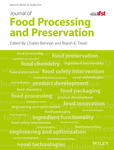Effects of partial substitution of goat's milk for sheep's milk, cured scalding and dry salting on proteolysis in Urfa cheese
Abstract
The effects of partial substitution of goat's milk for sheep's milk, scalding and dry salting on the proteolysis of Urfa cheese were monitored for 240 days. For this reason, the contents of total nitrogen, water-soluble nitrogen (WSN), and trichloroacetic acid-soluble nitrogen (TCA-SN) were explored as well as the chemical compositions of samples during ripening. Also, RP-HPLC of pH 4.6-soluble, 70% ethanol-insoluble (EtOH-i), and urea-PAGE of pH 4.6-insoluble nitrogen fractions of samples was determined. The results showed that the effects of partial substitution of goat's milk for sheep's milk on WSN and TCA-SN were significant from sixth to eighth month of the ripening, respectively. Even though the effects of the milk type, dry salting, and scalding on the peptide profile were significant at the beginning of maturation, the peptide profile of cheeses was almost similar at the end of the storage. Furthermore, the proteolysis of Urfa cheese was limited due to dry salting during the ripening.
Practical applications
The maturation of cheese is a complex biochemical process involving the hydrolysis of fat, breakdown of protein, and metabolism of lactose. Though the biochemical reactions during cheese ripening are not precisely understood, proteolysis is one of the most significant biochemical processes during maturation. It is known that the amino acids resulting from proteolysis are the precursors of flavor components in cheese. Milk itself is a significant source of proteolytic enzymes. And also, the curd scalding temperature and salt content of cheese affect the proteolytic activity during cheese ripening. However, limited proteolysis may be occurred during the cheese maturation due to dry salting and scalding process. Therefore, studies should focus on overcoming this problem. This study can help to overcome the limited proteolysis in the production of cheese. Also, results from the study may contribute to the industrial production of Urfa cheese.
CONFLICT OF INTEREST
The authors have declared no conflicts of interest for this article.




